This pub takes its name from Turls Green which was, for centuries, the name of the area now covered by Centenary Square.
A photograph and text about Lister’s Mill.
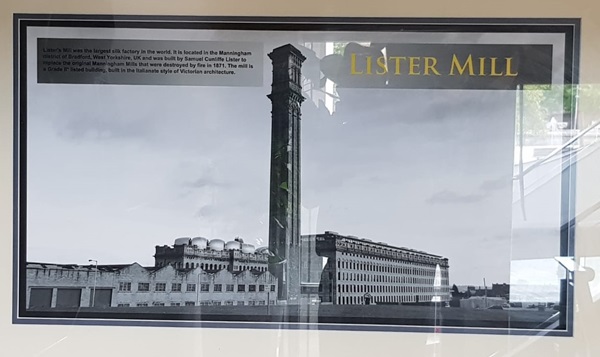
The text reads: Lister’s Mill was the largest silk factory in the world. It is located in the Manningham district of Bradford, West Yorkshire, UK and was built by Samuel Cunliffe Lister to place the original Manningham Mills that were destroyed by fire in 1871. The mill is a grade II listed building, built in the Italianate style of Victorian architecture.
A print and text about the Bronte Sisters.
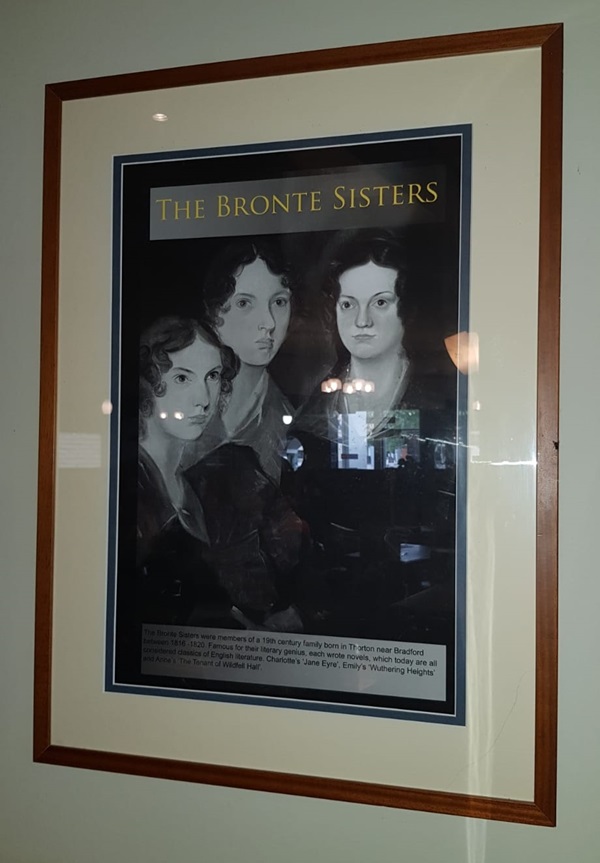
The text reads: The Bronte sisters were members of a 19th century family born new Bradford between 1816-20. Famous for their literary genius, each wrote novels, which today are all considered classics of English literature. Charlotte’s Jane Eyre, Emily’s Wuthering Heights and Anne’s The Tenant of Wildfell Hall.
A photograph and text about Bradford City Football Club.
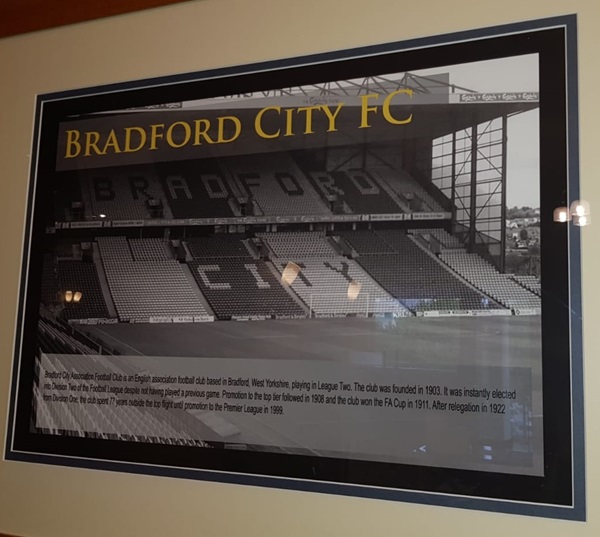
The text reads: Bradford City Association Football Club is an English association club based In Bradford, West Yorkshire, playing in League Two. The club was founded in 1903. It was instantly elected into Division Two of the Football League despite not having played a previous game. Promotion to the top tier followed in 1908 and the club won the FA Cup in 1911. After relegation in 1922 from Division One. The club spent 77 years outside the top fight until promotion to the Premier League in 1999.
A photograph and text about Bradford City Hall.
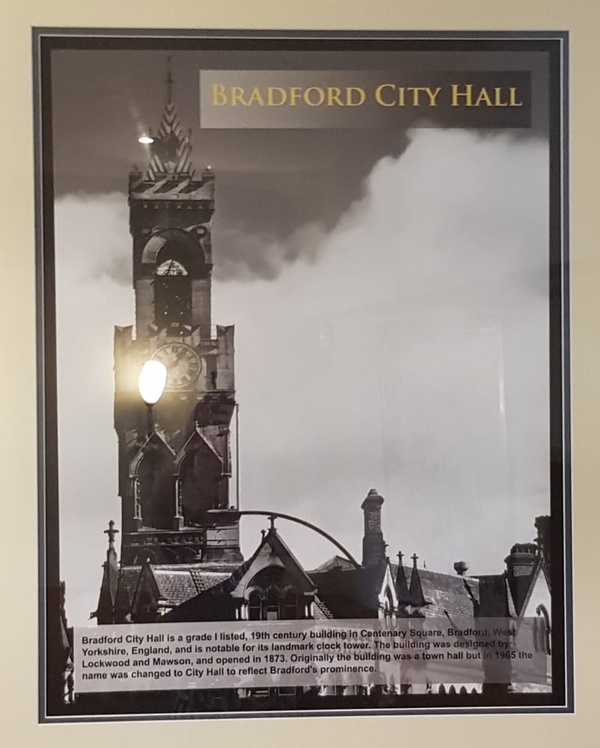
The text reads: Bradford City Hall is a grade I listed, 19th century building in Centenary Square, Bradford West Yorkshire, England, and is notable for its landmark clock tower. The building was designed by Lockwood and Mawson, and opened in 1873. Originally the building was a town hall but in 1965 the name was changed to City Hall to reflect Bradford’s prominence.
A photograph and text about Bradford Cathedral.
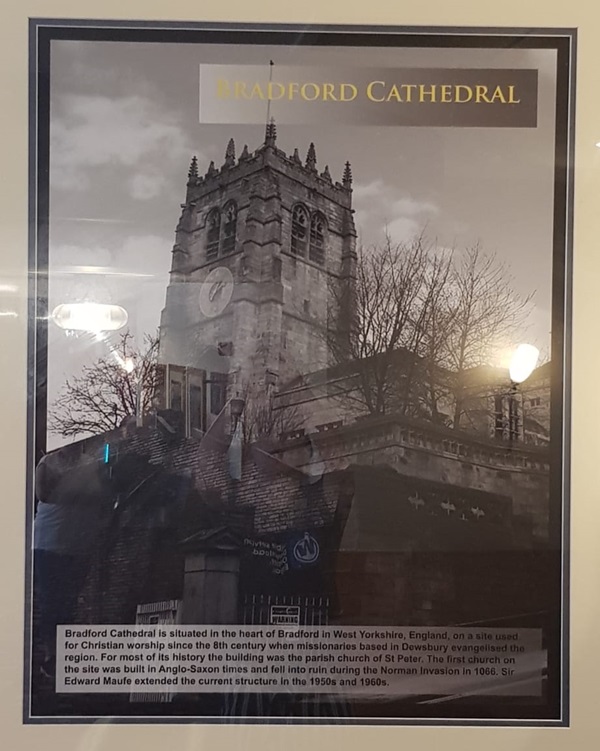
The text reads: Bradford Cathedral is situated in the heart of Bradford in West Yorkshire, England, on a site used for Christian worship since the 8th century when missionaries based in Dewsbury evangelised the region. For most of its history the building was the parish church of St Peter. The first church on the site was built in Anglo-Saxon times and fell into ruin during the Norman invasion in 1066. Sir Edward Maufe extended the current structure in the 1950s and 1960s.
Prints and text about the history of the building and the area.
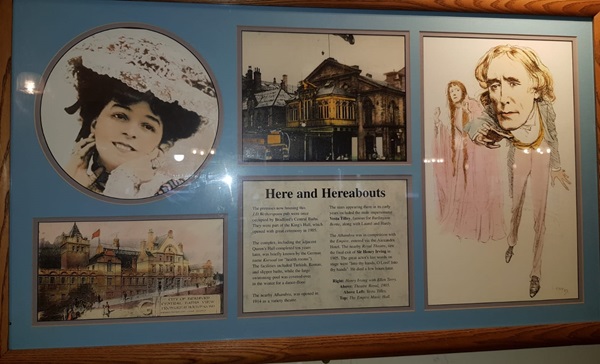
The text reads: The premises now housing this J D Wetherspoon pub were once occupied by Bradford’s Central Baths. They were part of the King’s Hall, which opened with great ceremony in 1905.
The complex, including the adjacent Queen’s Hall, completed ten years later, was briefly known by the German name Kursaal (or “health rooms”). The facilities included Turkish, Roman, and slipper baths, while the large swimming pool was covered over in the winter for a dance floor.
The nearby Alhambra was opened in 1914 as a variety theatre.
The stars appearing there in its early years included the male impersonator Vesta Tilley, famous for Burlington Bertie, along with Laurel and Hardy.
The Alhambra was in competition with the Empire, entered via the Alexandra Hotel. The nearby Royal Theatre, saw the final exit of Sir Henry Irving in 1905. The great actor’s last words on stage were “Into thy hands, O Lord! Into thy hands”. He died a few hours later.
Right: Henry Irving with Ellen Terry
Above: Theatre Royal, 1905
Above left: Vesta Tilley
Top: The Empire Music Hall
Prints and text about sculptures in the city.
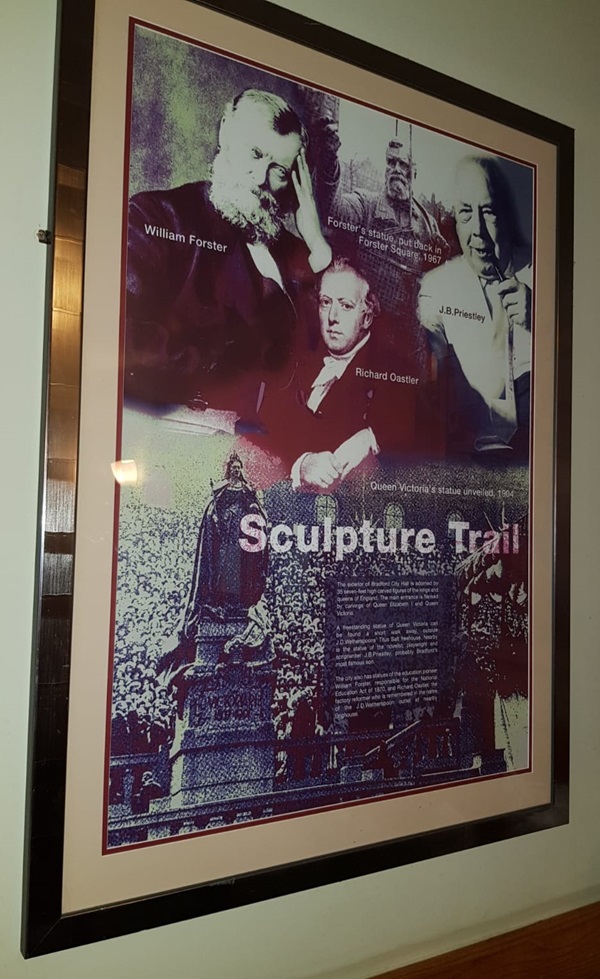
The text reads: The exterior of Bradford City Hall is adorned by 35 seven-foot high carved figures of the kings and queens of England. The main entrance is flanked by carvings of Queen Elizabeth I and Queen Victoria.
A freestanding statue of Queen Victoria can be found a short walk away, outside J D Wetherspoons’ Titus Salt freehouse. Nearby is the statue of the novelist, playwright and scriptwriter JB Priestly, probably Bradford’s most famous son.
The city also has statues of the education pioneer William Foster, responsible for the National Education Act of 1870, and Richard Oastler, the factory reformer who is remembered in the name of the J D Wetherspoon outlet at nearby Brighthouse.
Prints of Tyrrel Street.
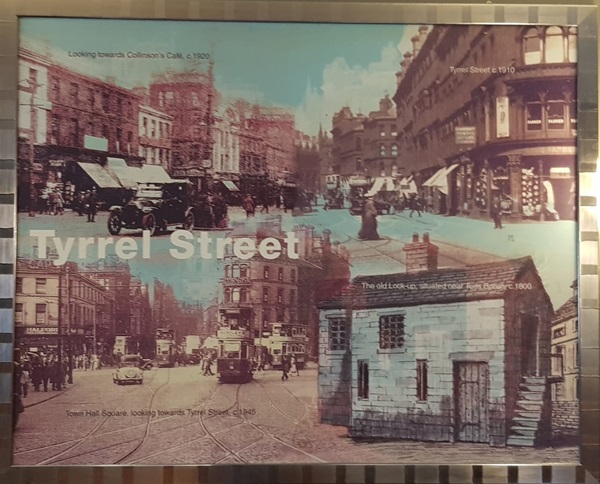
A photograph of Bradford, 1937.
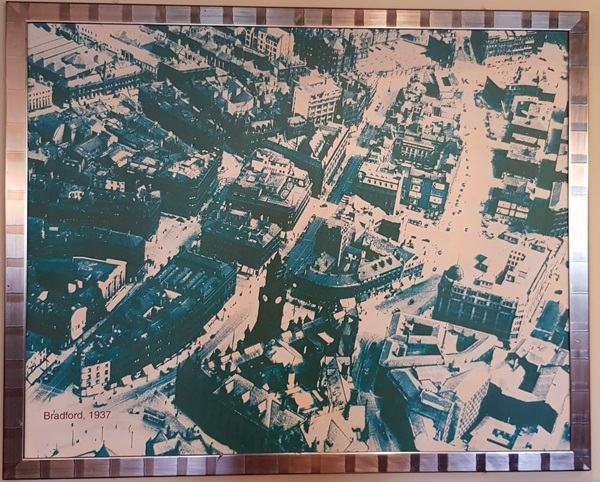
External photograph of the building – main entrance.
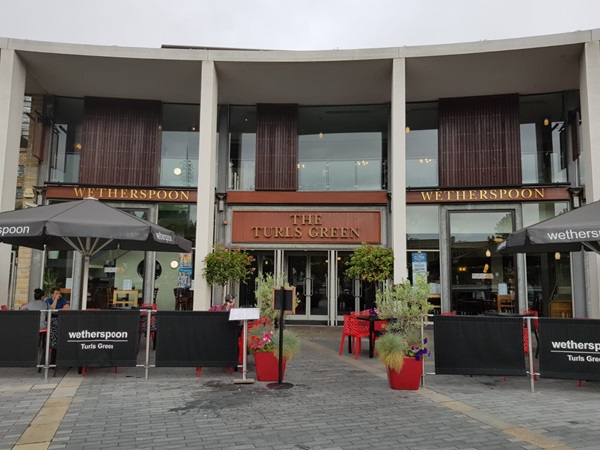
If you have information on the history of this pub, then we’d like you to share it with us. Please e-mail all information to: pubhistories@jdwetherspoon.co.uk